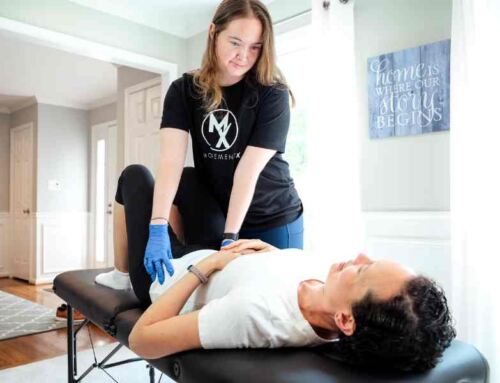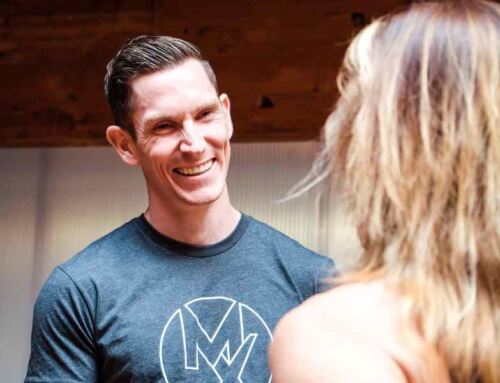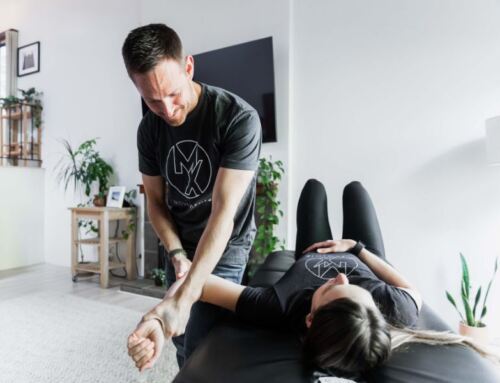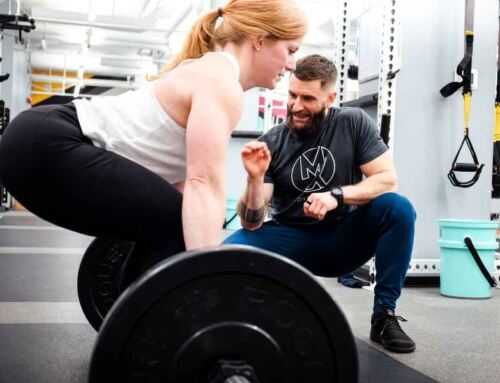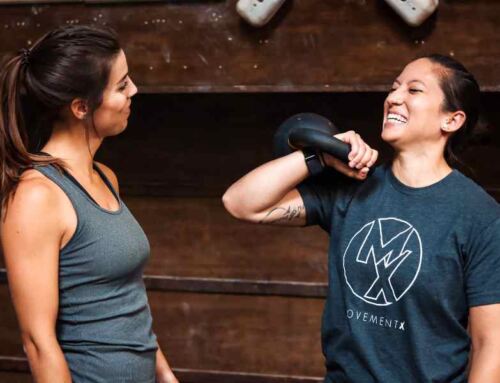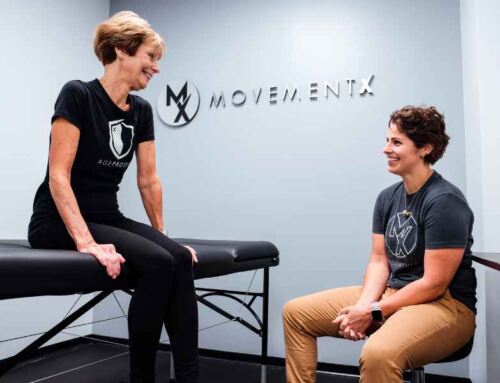You’ve spent months preparing for your baby’s arrival, washing tiny clothes, setting up the nursery, stocking up on essentials. But as you settle into life at home with your newborn, you might find yourself thinking: “Why didn’t anyone prepare me for this part?”
The transition from hospital to home can feel overwhelming, especially when your breastfeeding experience suddenly feels completely different. Those comfortable positions that worked perfectly in the hospital bed? They don’t seem to translate to your couch at home. Your neck aches from constantly looking down at your baby, what some moms call “newborn neck.” Your shoulders and back are painful from hours of feeding sessions, and you’re dealing with painful breast engorgement that no one warned you about.
If this sounds familiar, you’re not alone. The physical demands of breastfeeding extend far beyond what most new mothers expect, affecting everything from your posture to your comfort level. But here’s the good news: a women’s health physical therapist can be your guide through these challenges, helping you find pain-free positions, manage breast discomfort, and build the confidence to handle whatever comes next in your breastfeeding journey.
Why Your Body Hurts: The Physical Reality of New Motherhood
Becoming a new mother introduces your body to an entirely new set of physical demands. You’re suddenly spending hours each day in feeding positions, lifting and carrying your growing baby, and navigating movements your body isn’t accustomed to, all while dealing with the lingering effects of pregnancy and delivery.
The newborn phase comes with significant changes that impact how your body functions. Your posture has shifted during pregnancy and continues to adapt postpartum. Hormonal changes contribute to increased ligament and joint laxity, meaning your joints are more mobile but less stable. Meanwhile, your pelvic floor muscles and abdominal muscles are still recovering and may not provide the same support they did before delivery.¹

Common Physical Challenges New Breastfeeding Moms Face
Neck, Shoulder, and Back Pain
Those long feeding sessions, sometimes lasting 45 minutes or more, require you to maintain static positions that put significant strain on your upper body. “Newborn neck” develops from constantly looking down at your baby, while your shoulders round forward from cradling and supporting your little one.
Breast Pain and Engorgement
When your milk comes in, engorgement can make your breasts feel heavy, tender, and painful. Clogged ducts can develop, creating localized pain and potentially leading to mastitis if left untreated.²
Difficulty with Daily Movements
Simple tasks like lifting your baby from the crib, carrying the car seat, or even getting comfortable for feeding sessions can become sources of pain and frustration when your body mechanics aren’t optimized for these new demands.
Body Mechanics: Learning New Movement Patterns for Motherhood
A women’s health physical therapist can teach you essential body mechanics that protect your spine, joints, and muscles while caring for your baby. These aren’t just theoretical concepts, they’re practical skills you’ll use dozens of times each day.
Breastfeeding and Pumping Posture
Learning how to position yourself and your baby with proper support can eliminate neck and back strain. This might involve using pillows strategically, adjusting your chair height, or finding alternative feeding positions that work better for your body and your home setup.
Safe Lifting Techniques
Whether you’re picking up your baby, lifting the car seat, or reaching into the crib, proper lifting mechanics can prevent injury and reduce strain on your recovering abdominal and pelvic floor muscles.
Hip Hinge Strategies
This fundamental movement pattern helps protect your lower back when bending forward, something you’ll do countless times while caring for your baby.
Baby Wearing Guidance
When done correctly, baby wearing can actually support your posture and reduce strain. A physical therapist can help ensure you’re using carriers safely and comfortably for both you and your baby.
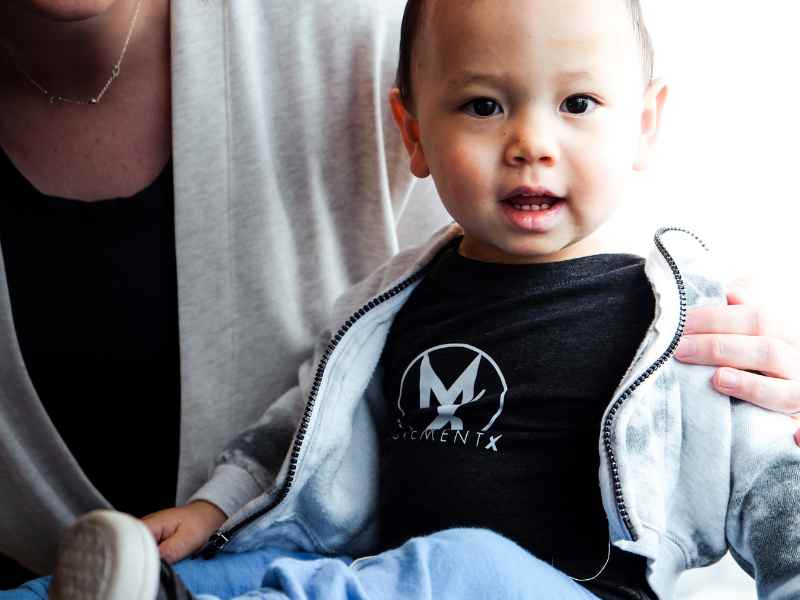
Targeted Exercises to Relieve Breastfeeding-Related Pain
Physical therapists can prescribe specific exercises tailored to address the unique demands of infant care. These exercises focus on strengthening weakened muscles, stretching tight areas, and restoring balance to your posture.
Scapular Squeezes
These help strengthen the muscles between your shoulder blades that become weak from prolonged forward postures during feeding.
To perform scapular squeezes, do the following steps:
- Begin sitting in an upright position.
- Gently squeeze your shoulder blades together, relax, and then repeat.
- Maintain good posture throughout the exercise.
- Perform this exercise 10 times for 2-3 sets.
Doorway Stretches
Perfect for opening up tight chest muscles that contribute to rounded shoulder posture.
To perform Doorway Stretches, do the following steps:
- Begin in a standing upright position in the center of a doorway.
- With your elbows bent, place your forearms on the sides of the doorway at a 90 degree angle from your sides.
- Then take a small step forward until you feel a stretch in the front of your shoulders.
- Hold this position for 30 seconds.
- Repeat this stretch 2-3 times.
Upper Trapezius Stretches
These target the neck and shoulder muscles that often become tense and painful from “newborn neck” postures.
To perform an Upper Trapezius Stretch, do the following steps:
- Begin sitting in an upright position.
- Use one hand to tilt your head sideways, pulling your ear toward one shoulder until you feel a stretch in the opposite side of your neck.
- Hold for 30 seconds.
- Repeat this stretch 2-3 times per side.
The beauty of working with a physical therapist is that these exercises are customized to your specific needs, your current fitness level, and your available time as a busy new mom.
Addressing Breast Pain Through Manual Lymphatic Drainage
One of the most valuable, yet lesser-known, skills that women’s health physical therapists offer is manual lymphatic drainage (MLD) for breast health. This gentle, non-painful technique can be incredibly effective for managing engorgement and preventing clogged ducts that disrupt your breastfeeding goals.³
Manual lymphatic drainage helps reduce swelling, improve milk flow, and can prevent the progression from clogged ducts to mastitis, a painful breast infection. Even better, these techniques can be taught to you for long-term use, giving you confidence to manage breast discomfort when it arises.
When combined with the expertise of an International Board Certified Lactation Consultant (IBCLC), physical therapy provides comprehensive, team-based care that addresses both the mechanical and feeding aspects of your breastfeeding journey.

The Unique Benefits of In-Home Physical Therapy for New Moms
One of the most significant advantages of working with MovementX is the option for in-home care, which is particularly valuable during the early postpartum period. This approach offers several key benefits:
Convenience and Comfort
No need to pack up your baby, coordinate feeding times, or navigate the logistics of leaving home with a newborn. You can receive expert care while staying in the comfort of your own space.
Real-World Application
Learning and practicing proper body mechanics, feeding positions, and exercises in your actual home environment means you’re more likely to continue using these strategies successfully.
Early Intervention
In-home physical therapy can serve as an important early touchpoint for screening and care, aligning with the American College of Obstetricians and Gynecologists (ACOG) recommendations for comprehensive
References
- Critchley CJC. Physical Therapy Is an Important Component of Postpartum Care in the Fourth Trimester. Phys Ther. 2022 May 5;102(5):pzac021. doi: 10.1093/ptj/pzac021. PMID: 35225339.
- Doğan H, Eroğlu S, Akbayrak T. Comparison of the Effect of Kinesio Taping and Manual Lymphatic Drainage on Breast Engorgement in Postpartum Women: A Randomized-Controlled Trial. Breastfeed Med. 2021 Jan;16(1):82-92. doi: 10.1089/bfm.2020.0115. Epub 2020 Oct 8. PMID: 33030349.
- Amir LH. Managing common breastfeeding problems in the community. BMJ. 2014 May 12;348:g2954. doi: 10.1136/bmj.g2954. PMID: 24821712.
- Dutta D, Singh S, Naik P Jr. The Most Comfortable Posture at First Postnatal Day in Women With Episiotomy for Breastfeeding and Routine Activities. Cureus. 2021 Feb 18;13(2):e13432. doi: 10.7759/cureus.13432. PMID: 33767928; PMCID: PMC7983179.
- American College of Obstetricians and Gynecologists. Optimizing postpartum care. Obstet Gynecol. 2018;131(5). doi:10.1097/AOG.0000000000002633.
About the Author
Kaylene Hernandez, PT, DPT is a doctor of physical therapy proudly serving Northwest Indianapolis specialized in pelvic health across the lifespan. Her advanced training covers male and female pelvic floor dysfunction, pediatric pelvic health, oncology rehabilitation, lymphedema, and dry needling. With an approach to care that is to listen deeply, treat holistically, and empower constantly, Dr. Hernandez is committed to helping you thrive in every season of life.



